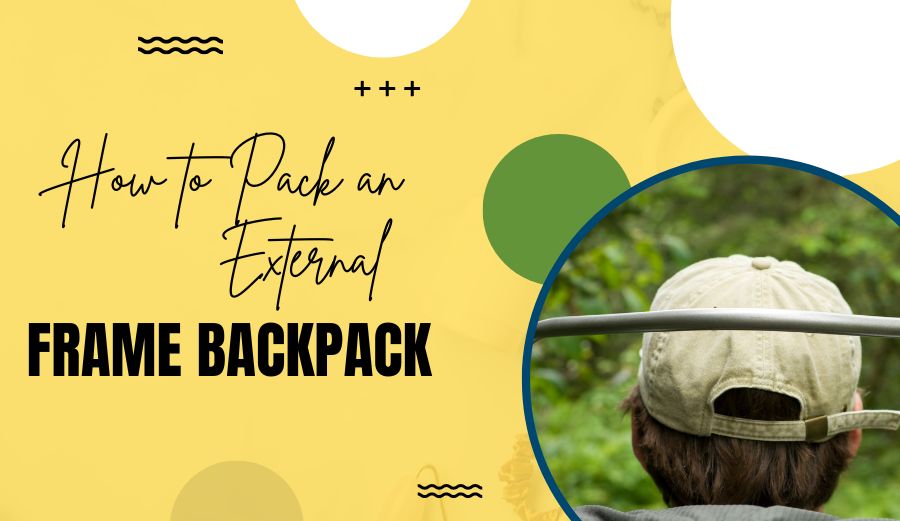How to Waterproof a Backpack: Master the Art of Gear Protection
In the wild, unpredictable weather and unexpected challenges are constants. To preserve your gear’s integrity, waterproofing a backpack is non-negotiable. Shield your essentials, conquer nature’s tests, and embrace adventures unhampered.
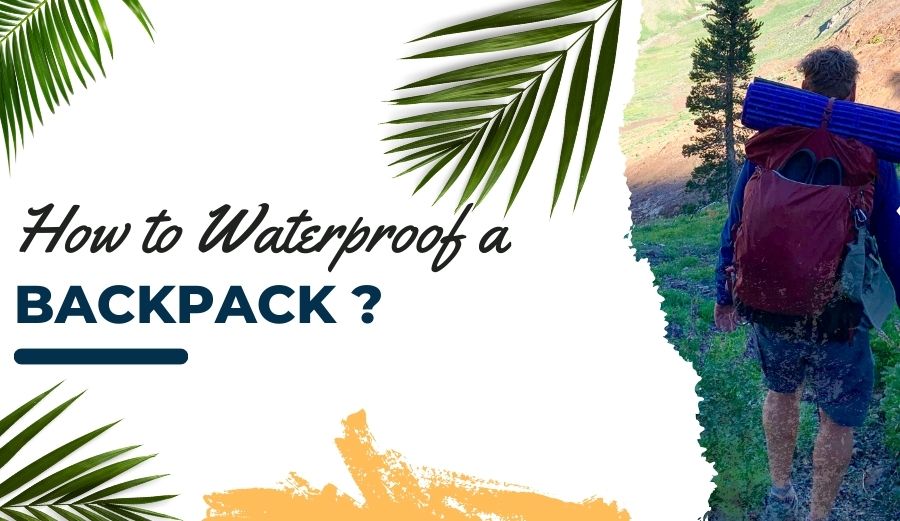
Knowing how to waterproof a backpack is paramount in outdoor exploration. The need for gear protection becomes undeniable as the rain pours and rivers beckon. While Google’s search results offer insight, we’re here to transcend the basics.
This guide is designed to be your compass through the sea of information, providing a standard how-to and a comprehensive and expert-led journey into safeguarding your adventure essentials. Join us as we delve into the heart of waterproofing mastery, ensuring that your backpack remains a fortress against the elements.
Table of Contents
ToggleRisk of Water Damage to Gear and Supplies
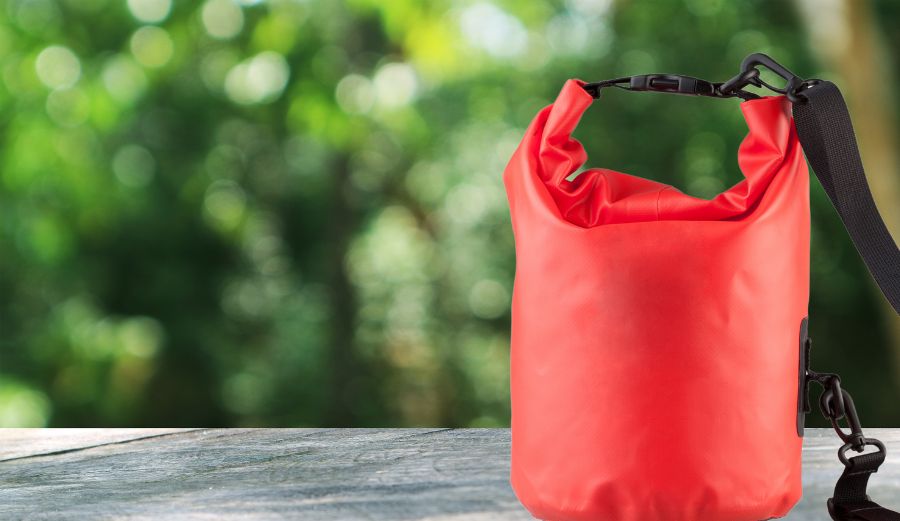
In the wild, moisture can wreak havoc on your gear – from soaked clothes to damaged electronics. Water seeping into your essentials can lead to functionality issues, increased weight, and mold growth.
Crucial Scenarios for Waterproofing
Hiking in Rainy Conditions: Rain can turn trails into streams and transform adventure into discomfort. Proper waterproofing shields your gear against downpours, allowing you to focus on the path ahead.
Crossing Water Bodies: Be it a river or a tranquil stream, water crossings are inevitable. Waterproofing ensures your backpack’s contents stay dry, preventing potential disasters amid a hub.
Camping in Wet Environments: A soggy campsite can dampen spirits. Waterproofing safeguards your gear and contributes to a more comfortable and enjoyable camping experience, free from dampness.
In these scenarios and more, the value of waterproofing emerges as a pivotal skill, promising to enhance your outdoor adventures with confidence and resilience.
Importance of Backpack Evaluation
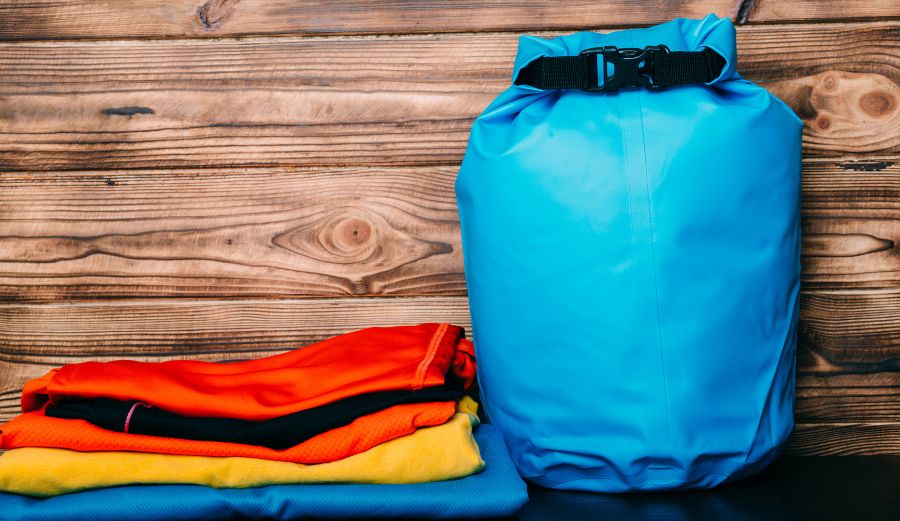
Before embarking on waterproofing endeavors, conduct a thorough evaluation of your backpack. Check for wear, tear, and any existing damage that might compromise waterproofing efforts. Addressing these issues beforehand ensures your efforts yield optimal results.
Strategies for Gear Inventory
- Categorize Essentials: Divide your gear into categories – clothing, electronics, food, etc. This organization aids in identifying items that are more susceptible to water damage.
- Prioritize High-Risk Items: Electronics, documents, and clothing can be particularly vulnerable. Prioritize these items when considering waterproofing solutions.
- Consider Trip Factors: Assess the nature of your trip. Longer durations, extreme weather, and water crossings require more comprehensive waterproofing measures.
- Evaluate Backpack Design: Understand your backpack’s compartments and openings. Certain areas require specialized attention to prevent water seepage.
By meticulously evaluating your backpack’s condition and conducting a gear inventory, you equip yourself with the insights to tailor your waterproofing approach. This proactive step ensures that your efforts align with the unique demands of your outdoor escapades.
Selecting the Right Waterproofing Method
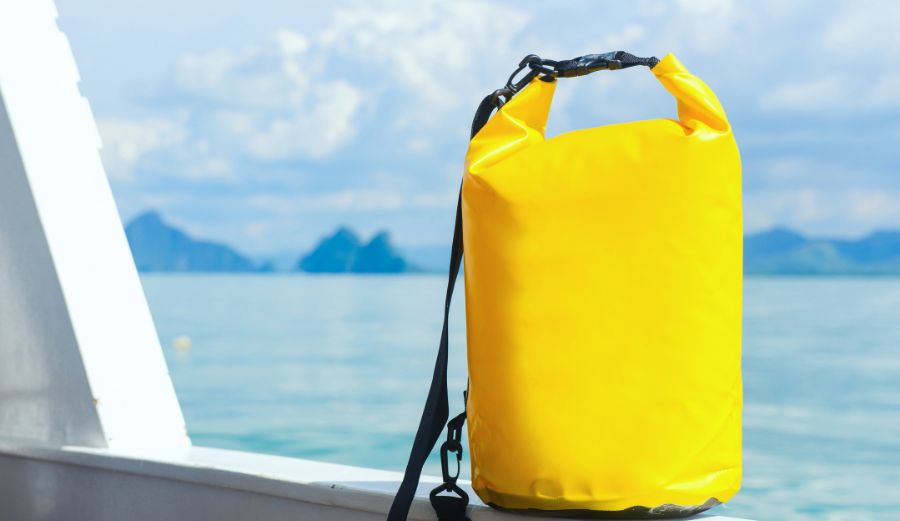
Comparing Waterproofing Techniques
When it comes to fortifying your backpack against the elements, multiple methods beckon. Here’s a rundown of four prominent approaches:
- Seam Sealing: A meticulous process involving sealing the stitches and seams of your backpack with a waterproof adhesive. It is ideal for enhancing the backpack’s inherent waterproof qualities.
- Spray-On Waterproofers: Convenient and versatile, these sprays create a waterproof barrier on the backpack’s surface. They’re easy to apply and can rejuvenate the waterproofing of aging gear.
- Waterproof Covers: These covers act as shields, enveloping your backpack entirely. They offer instant protection against rain and splashes but might add bulk and affect aesthetics.
- Waterproof Backpack Liners: These liners act as an internal waterproofing layer, enclosing your gear. While they effectively keep items dry, they require careful organization.
Pros and Cons of Each Method
- Seam Sealing: +Enhances backpack’s waterproofing, +Long-lasting results, -Labor-intensive process, -Requires careful application.
- Spray-On Waterproofers: +Convenient application, +Suitable for various gear, -May need frequent reapplication, -Might alter material appearance.
- Waterproof Covers: +Instant protection, +Easy to use, -Adds bulk, -Not fitting all backpacks snugly.
- Waterproof Backpack Liners: Comprehensive gear protection, great for wet environments;- Requires organizational adjustments and adds some weight.
Choosing the ideal method depends on your backpack’s design, trip duration, and personal preferences. With a clear understanding of each technique’s merits and limitations, you can confidently steer your waterproofing journey in the right direction.
Step-by-Step Guide: Waterproofing Your Backpack
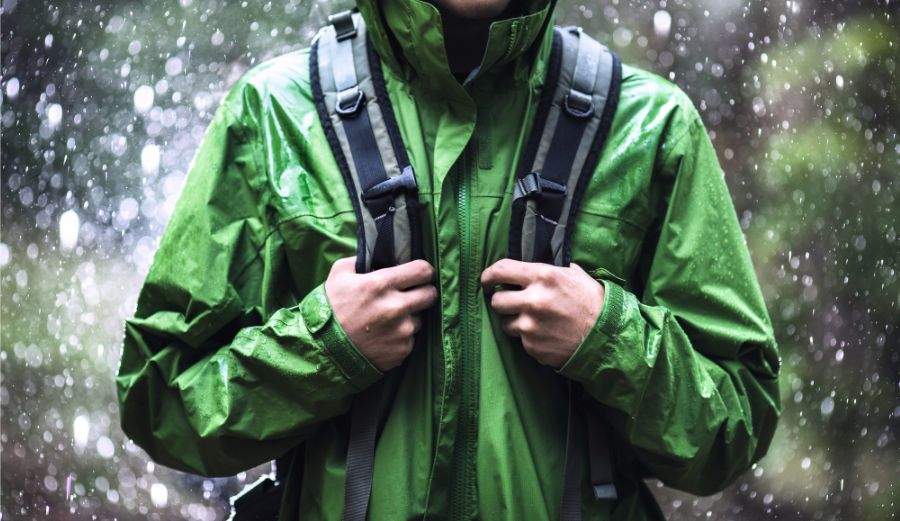
A. Preparation Stage
1. Cleaning the Backpack: Ensure your backpack is clean before waterproofing. Remove dirt, debris, and any residual substances. Use a gentle detergent and a soft brush to scrub away grime. Rinse thoroughly and allow it to dry completely.
2. Drying the Backpack: After cleaning, drying is paramount. Ensure every nook and cranny is moisture-free. Hang the backpack in a well-ventilated area, avoiding direct sunlight. Complete drying prevents mold and mildew growth, preserving your gear’s longevity.
B. Seam Sealing
1. Identifying Seams: Inspect your backpack for seams – those vulnerable points prone to water infiltration. Focus on stitches, seams, and areas where fabrics meet. Mark these spots for targeted seam sealing.
2. Seam Sealing Process: Seam sealer to the marked areas using a small brush or applicator. Ensure an even, thin layer along the seams. The sealer acts as a protective barrier against water penetration.
3. Drying Time: Allow the seam sealer to dry completely. Follow the manufacturer’s recommendations for drying time. A proper drying period ensures the sealer adheres effectively and enhances your backpack’s waterproofing.
C. Spray-On Waterproofers
1. Selecting the Right Product: Consider your backpack’s material and outdoor activities. Opt for a spray-on waterproofing product suitable for your gear’s fabric. Read reviews, seek expert recommendations, and make an informed choice.
2. Application Process: Spray the waterproofing product evenly on your backpack’s exterior. Ensure coverage over seams and high-risk areas. Hold the spray at a suitable distance for consistent application.
3. Testing and Reapplication: Allow the waterproofing spray to dry according to the product instructions. Test its effectiveness by sprinkling water on the backpack. Reapply as needed, focusing on areas where water may have been absorbed.
D. Waterproof Backpack Covers
1. Choosing the Right Cover: Consider the cover’s size, material, and design. Opt for a cover that fits your backpack snugly. Look for features like adjustable straps and reinforced seams.
2. Proper Fitting: Stretch the cover over your backpack, ensuring it’s well-positioned. Adjust straps and buckles to secure the lid firmly. A snug fit prevents water from seeping through gaps.
3. Benefits and Limitations: Waterproof covers provide instant protection from rain and splashes. However, they might add bulk to your pack. Use covers selectively based on your trip’s requirements.
E. Waterproof Backpack Liners
1. Liner Selection: Choose a liner that suits your backpack’s size and design. Some liners are tailored to fit specific models, while others are more versatile. Consider liner material and durability.
2. Inserting the Liner: Insert the waterproof liner into your backpack, ensuring it covers the interior thoroughly. Arrange it to fit your gear’s shape while avoiding wrinkles or folds that might compromise the seal.
3. Organizational Tips: Utilize the liner for both waterproofing and organization. Group items into categories and place them within the liner’s compartments. This ensures efficient packing and easy access to essentials while keeping them dry.
Following these steps, you’ll master the art of waterproofing your backpack. Whether through seam sealing, spray-on waterproofers, covers, or liners, your gear will stand resilient against the elements, allowing you to immerse yourself in the great outdoors without hesitation.
Expert Tips for Long-Term Waterproofing
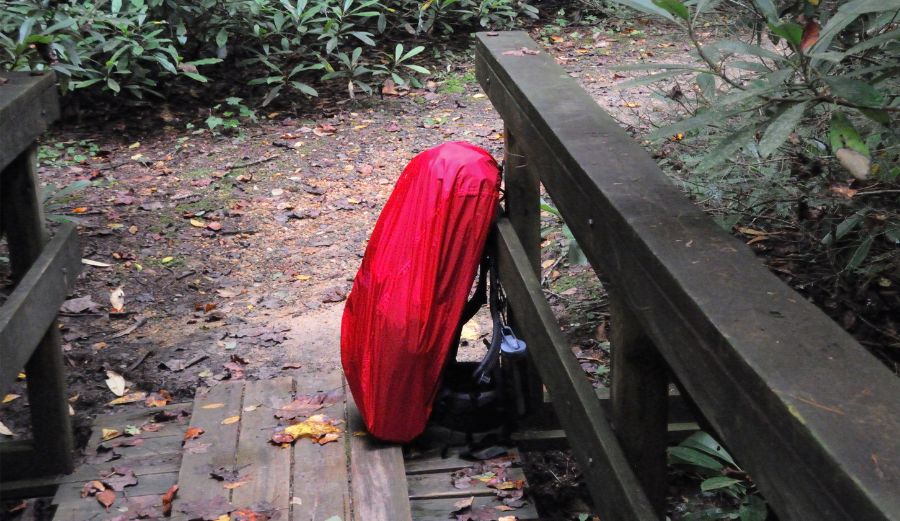
Enhancing the Durability of Waterproofing Solutions
- Double Up on High-Risk Areas: For extra protection, consider applying waterproofing solutions like seam sealers or sprays on high-risk zones such as seams, zippers, and pockets.
- Layering Strategies: If your trip involves extreme conditions, layering waterproofing methods can provide added security. For instance, combining a waterproof cover with a spray-on waterproof can be a formidable defense.
- Reinforce Seams: If your backpack’s seams are particularly vulnerable, you can reinforce them by stitching on waterproof tape or fabric patches. This added layer of protection can extend the life of your waterproofing efforts.
Periodic Inspections and Maintenance
- Regular Checks: Make it a habit to inspect your backpack before and after each adventure. Look for signs of wear, damage, or compromised waterproofing, and address issues promptly.
- Reapply as Needed: Waterproofing solutions might wear off over time due to use, exposure, or washing. Feel free to reapply seam sealers or spray-on waterproofers whenever you notice a decline in effectiveness.
- Storage Considerations: When not in use, store your backpack in a cool, dry place to prevent the breakdown of waterproofing materials. Avoid direct sunlight, which can degrade fabrics and coatings.
Proactive Care for Lasting Performance
- Mindful Handling: Handle your waterproofed backpack with care. Rough usage can lead to abrasions or tears, compromising the waterproofing. Avoid dragging it on uneven surfaces.
- Clean with Caution: If your backpack gets dirty, clean it gently with a damp cloth or sponge. Harsh cleaning agents can damage waterproof coatings and compromise their effectiveness.
- Retire or Revamp: As backpacks age, their waterproofing might deteriorate. Assess whether it’s more practical to invest in a new backpack or explore re-waterproofing options for your beloved gear.
By incorporating these expert tips into your routine, you enhance the longevity of your backpack’s waterproofing and nurture a deeper connection with your gear. This proactive approach ensures that every outdoor journey remains dry, comfortable, and triumphant.
Essential Packing Practices for Waterproofing

Smart Packing Techniques for Moisture Protection
- Utilize Compression Sacks: These sacks save space and create an extra layer of protection. Squeeze out excess air to minimize moisture infiltration.
- Organize with Dry Bags: Categorize your gear and place items in waterproof dry bags. This prevents water from seeping through zippers and adds an extra barrier against dampness.
- Inner Liner Separation: If using a waterproof liner, separate gear within the liner. Use smaller waterproof pouches or bags to prevent contact between damp and dry items.
Importance of Dry Bags
- Critical Item Protection: Essential gear like electronics, documents, and clothing should be stowed in dry bags. These items are often the most vulnerable to water damage.
- Water Crossings Confidence: When crossing water bodies, your gear remains unaffected, thanks to dry bags. They offer peace of mind in challenging situations.
- Organized Accessibility: Dry bags help organize your backpack’s contents, making it easier to locate items while preventing the chaos of wet gear.
By mastering these packing strategies and embracing the use of dry bags, you not only enhance your waterproofing efforts but also streamline your outdoor experience. Your gear stays protected, accessible, and ready for the adventures ahead.
Emergency Measures for Sudden Rainfall

Dealing with Unexpected Rain on the Trail
- Stay Calm: Sudden rain can be unsettling, but keeping a clear head is crucial. Panic can lead to rushed decisions that may not effectively safeguard your gear.
- Find Shelter: Seek natural shelter under trees, rock formations, or cliffs. Create a temporary cover using your rain poncho or an emergency tarp if none are available.
- Protect Critical Items: Prioritize shielding essential gear like electronics and documents. Quickly place them in waterproof dry bags or wrap them in a rain jacket.
Quick Protection for Backpack and Gear
- Deploy the Rain Cover: If you have a waterproof cover for your backpack, put it on immediately. This provides instant protection against rain and prevents saturation.
- Emergency Liner Use: If using a waterproof backpack liner, ensure it’s properly sealed. In a rush, quickly arrange your gear inside the liner to safeguard against water.
- Elevate Your Backpack: If the ground is wet, elevate your backpack using rocks or logs to prevent water absorption.
Remember, preparation is critical. Keeping essential rain gear easily accessible and understanding quick protective measures can make a difference when the weather takes an unexpected turn.
Real-Life Waterproofing Success Stories

A Backpacking Adventure, Unhampered by Rain
“During a multi-day trek in the Pacific Northwest, an unexpected rainstorm struck. Thanks to waterproofing techniques, my gear remained dry and functional. Sealing sealing prevented leaks, while a well-fitted, waterproof cover shielded my pack. I emerged from the rain unscathed, a testament to the power of preparation.” – Emily, Seasoned Backpacker.
From Drenched to Dry: A Waterproofing Triumph
“On a cross-country cycling journey, I encountered heavy rainfall that soaked my backpack. Applying a spray-on waterproofing solution turned out to be a game-changer.
My gear repelled water, and the drying process was faster than expected. The difference was remarkable, and I continued my adventure with equipment ready for whatever nature had in store.” – Mark, Outdoor Enthusiast.
Mastering Waterproofing for a Rainforest Expedition
“In the dense rainforests of Costa Rica, waterproofing was paramount. My waterproof backpack liner kept my essentials dry even during intense downpours. The organizational tips ensured that everything stayed neat and accessible. The guide’s advice proved invaluable, making my rainforest adventure enjoyable and worry-free.” – Carlos, Nature Explorer.
These real-life accounts reflect the transformative impact of mastering waterproofing techniques. Through careful preparation and the application of expert advice, these adventurers conquered adverse weather conditions, proving that a well-protected backpack is the key to unlocking memorable outdoor experiences.
Final Thoughts
In outdoor exploration, the art of backpack waterproofing is an indispensable skill that transforms challenges into triumphs. As rain clouds gather and rivers beckon, the importance of safeguarding your gear against water damage becomes undeniable. This comprehensive guide has delved into the heart of waterproofing, equipping you with techniques and insights to elevate your outdoor adventures.
Share Your Waterproofing Journey
We invite you to share your waterproofing triumphs, challenges, and insights with fellow adventurers. Your experiences can add to the collective wisdom of the outdoor community and inspire others to conquer the elements.
Empowering Mastery of Waterproofing
Our goal has been to provide more than a standard guide; we aimed to offer expert-led, comprehensive advice to help you master the art of waterproofing. As you embark on your next expedition, remember that a well-protected backpack is your ally against nature’s unpredictability. May your journeys remain dry, comfortable, and filled with the awe-inspiring wonders of the great outdoors.
FAQs
While it offers some protection, a dedicated rain cover provides better coverage and secure fitting.
No, not all backpacks are waterproof. Many backpacks require additional waterproofing.
Yes, but avoid using harsh detergents that may compromise the waterproofing. Handwashing is recommended.
Inspect your backpack before each trip and reapply waterproofing as needed or at least once a year.
Yes, you can DIY waterproof your backpack using wax or other household materials, but commercial waterproofing solutions offer better results.


